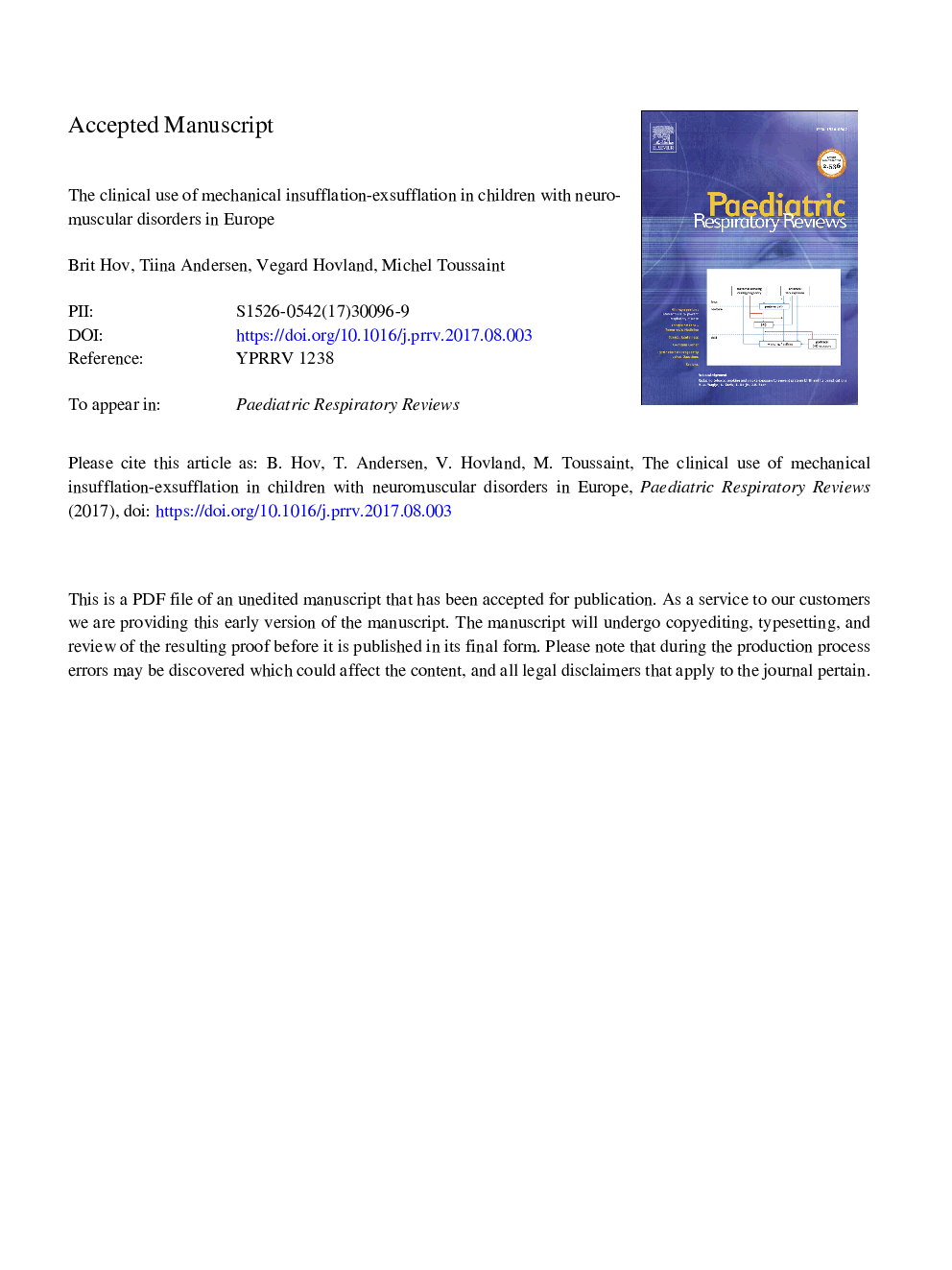| Article ID | Journal | Published Year | Pages | File Type |
|---|---|---|---|---|
| 8952772 | Paediatric Respiratory Reviews | 2018 | 12 Pages |
Abstract
Mechanical insufflation-exsufflation (MI-E) is a strategy to treat pulmonary exacerbations in neuromuscular disorders (NMDs). Pediatric guidelines for optimal setting titration of MI-E are lacking and the settings used in studies vary. Our objective was to assess the actual MI-E settings being used in current clinical treatment of children with NMDs and a survey was sent in July 2016 to European expertise centers. Ten centers from seven countries gave information on MI-E settings for 240 children aged 4â¯months to 17.8â¯years (mean 10.5). Settings varied greatly between the centers. Auto mode was used in 71%, triggering of insufflation in 21% and manual mode in 8% of the cases. Mean (SD) time for insufflation (Ti) and exsufflation (Te) were 1.9 (0.5) and 1.8 (0.6) s respectively, both ranging from 1 to 4 s. Asymmetric time settings were common (65%). Mean (SD) insufflation (Pi) and exsufflation (Pe) pressures were 32.4 (7.8) and â36.9 (7.4), ranging 10 to 50 and â10 to â60 cmH2O, respectively. Asymmetric pressures were as common as symmetric. Both Ti, Te, Pi and Pe increased with age (pâ¯<â¯0.001). In conclusion, pediatric MI-E settings in clinical use varied greatly and altered with age, highlighting the need of more studies to improve our knowledge of optimal settings in MI-E in children with NMDs.
Keywords
Related Topics
Health Sciences
Medicine and Dentistry
Perinatology, Pediatrics and Child Health
Authors
Brit Hov, Tiina Andersen, Vegard Hovland, Michel Toussaint,
